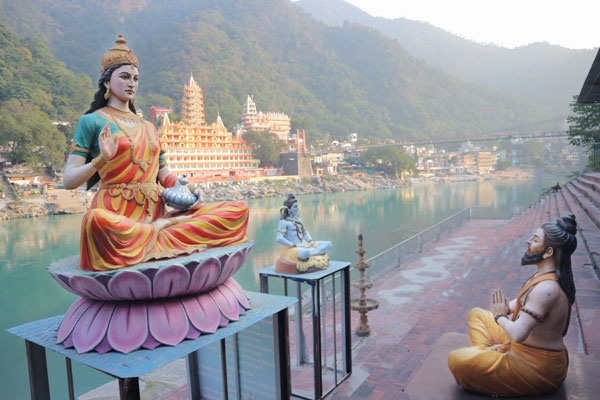A feel-good escape to the Himalayas
Kapil is telling me to breathe in and out as slowly as I can. I don’t know whether it’s my yoga teacher’s soft-like-silk voice or the art of focusing solely on one tiny aspect of my being – legs crossed, hands pressed together in front of my chest – but for once my mind is quiet. I feel completely at peace as the morning sun breaks over the mountains and warms my cheeks, as the wind rustles in the trees and a crow calls overhead, and as the river froths in the yawning valley below.
If I was to have a life-changing yoga experience, it was always going to be here. I’m in the mountains above the yoga capital of the world: Rishikesh in India. This small city, in the northern state of Uttarakhand, lies scattered across the banks of the mighty Ganges, one of the holiest rivers in the Hindu faith, in the foothills of the Himalayas. One of India’s oldest pilgrimage sites, the sleepy Hindu city garnered international attention in 1968 when The Beatles visited to take part in a meditation course at the ashram of the renowned Maharishi Mahesh Yogi.
Rishikesh remains popular today, particularly among keen yogis and backpackers finding their spiritual path.
Yet they might not realise that in the mountains looming above, yoga is complemented by exhilarating pursuits such as hiking, climbing and white-water rafting. Paired with healing mountain air and local Pahari cuisine centred around native Himalayan produce, it’s the kind of getaway that feels good for the soul.
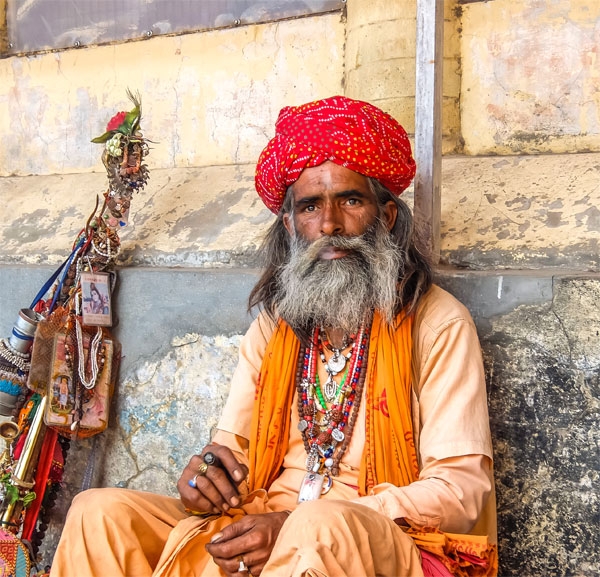


In with the new
The Uttarakhand mountains – known as the Land of the Gods – have long served as a popular weekend retreat for Indians, who flock to their second homes to get away from the stresses of the city and soak up the purity of the Himalayas. Thanks to a new luxury property from Taj Hotels, Taj Rishikesh Resort & Spa, the mountains are opening up to international travellers too, offering a great alternative for second-time visitors to India who have already explored the Golden Triangle, or as an add-on destination before or after a North Indian itinerary.
Opened last November, the property lies 19 miles above Rishikesh in a quiet and unassuming village called Singthali, holding a prime position within a curve of the Ganges and surrounded by towering peaks on all sides. It’s the most premium addition to the small collection of lodges and adventure camps nestled into the mountains here, and, as we’re ushered onto a glass-sided terrace jutting out over the valley, we learn why it’s causing such a stir.
I’m given a yellow bhindi and an intricate bracelet made from seeds grown in the mountains (thought to give good health and inner peace), while a steaming cup of wild rhododendron tea is thrust into my hands. I take a sip while looking out over the sun-streaked mountains, a thin veil of winter mist hanging mysteriously over their peaks. Whether you believe in the spiritual energy of the river or not, there’s no denying this region emanates feel-good vibes.
Indeed, active relaxation is the name of the game here, and whether you’re enjoying alfresco yoga in the hotel’s mountainside pavilion with Kapil or hiking a hilly trail, it’s impossible not to feel revitalised by the region’s vast beauty. We take a number of hikes along the river – where stones are coloured all hues of lilac and rust, and small cows roam freely thanks to their sacred status in India – and higher up into the foothills of the Himalayas.
Nature takes centre stage here and it’s imperative you explore with a guide. Ours, Asad, is Taj Rishikesh’s resident naturalist and an expert in the region’s rich flora and fauna, which includes birds, barking deer, porcupines, mountain goats, Himalayan bears and even leopards, as well as countless native flowers and plants.
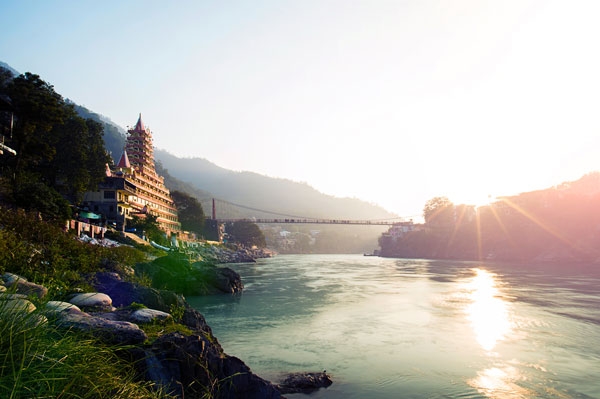
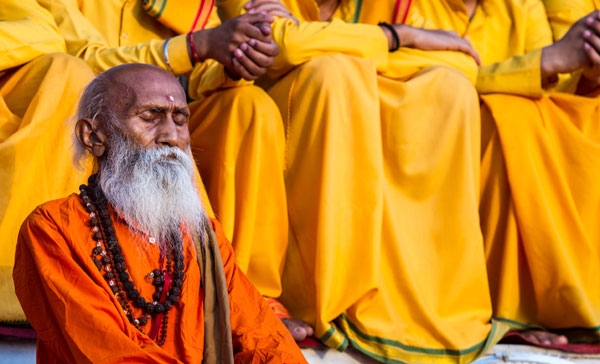
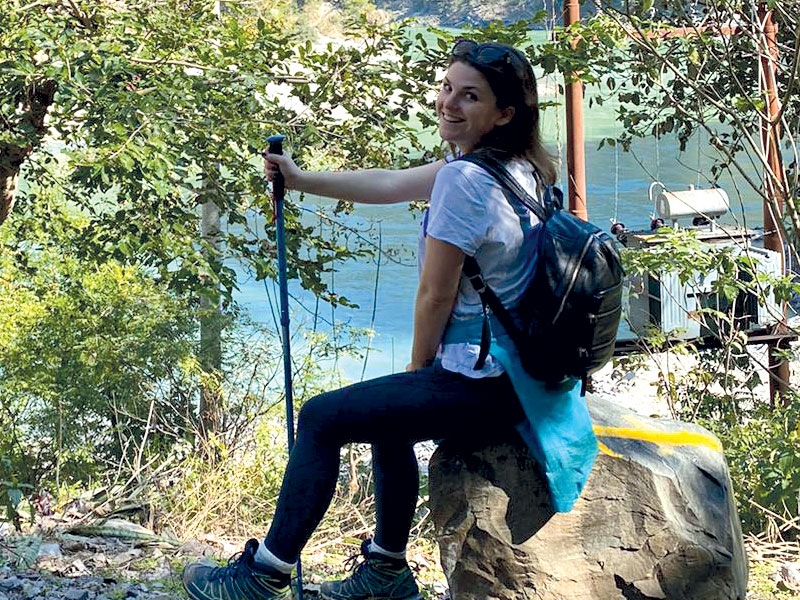
Taking the plunge
The Uttarakhand mountains are also a great fit for adrenaline seekers. Decked out in wetsuits and helmets, we decide to embark on a white-water rafting adventure and set about navigating the Shivpuri to Rishikesh section, where rapids are designated level two to three (ideal for beginners).
We squeal like children as we row through the icy white waters, trying to paddle while perching precariously on the side of our inflatable raft, with just our feet wedged into barrels in the middle for anchors.
“This next section is called the rollercoaster,” says our guide, a former Sherpa and extreme sports enthusiast, who seems as unphased by our inexperience as he is the rapid ahead. It’s the hardest out of the eight we’ll experience today, he tells us. I gulp.
Our seemingly flimsy raft begins to accelerate uncontrollably over the undulating waves as my freezing hands desperately try to sink my oar into the water to steer. Nearly jolting overboard, I give up and proceed to scream my way through the so-called rollercoaster – not quite the fearless leader I had hoped to be.
White-water rafting your way into Rishikesh is certainly one of the coolest ways to reach the city – both literally and figuratively. After changing into warm clothes, we head into the labyrinth of lanes lined with shops selling jade rollers and precious stones, homemade jewellery and trinkets filled with Ganges water, pashmina scarves and silk saris.
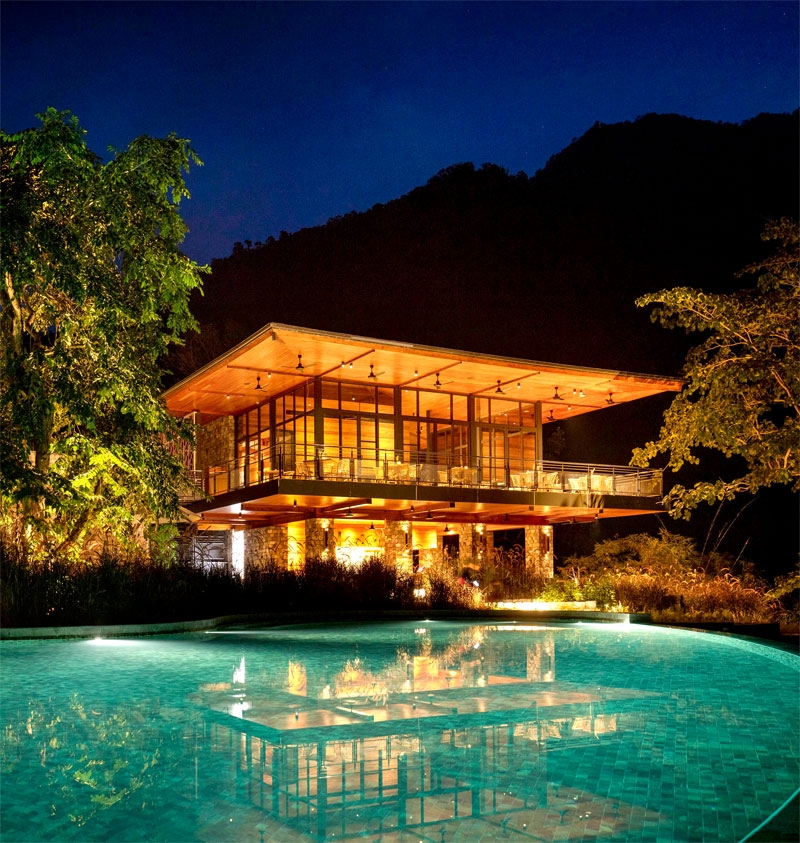
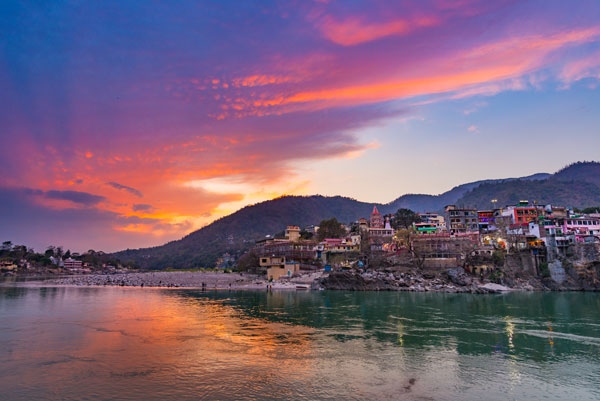
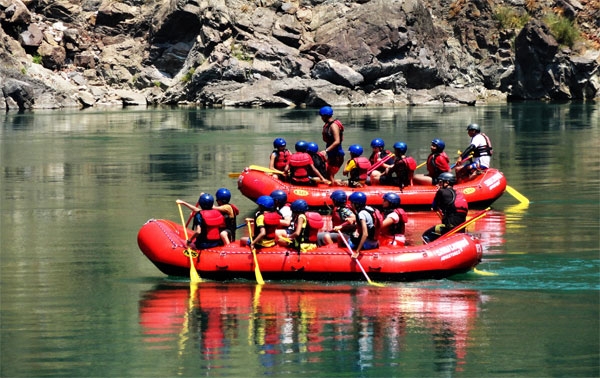
Hungry after the exercise, we make a beeline for the Beatles Cafe, a tucked-away eatery with a huge balcony featuring sweeping views of the river. The plant-smothered cafe feels like stepping back to the 60s, with photos of the band’s time in Rishikesh plastered over the walls and hip locals reading books over paneer butter curry and garlic naan.
Rishikesh is a town for wandering – the Lakshman Jhula bridge and the Beatles Ashram are other must-sees – but be sure to head to Parmarth Niketan ashram, the largest in Rishikesh, in time for a sunset Ganga Aarti. The biggest declaration of love for the Ganges, Ganga Aarti is a twice-daily ceremony held in the morning and evening to show gratitude and respect to the river and ask for its blessing.
Ceremonies often take place among households but the scenes at Parmarth Niketan are like no other. Hundreds of locals and tourists gather along the riverside, sitting cross-legged with their shoes off, while chanting hymns, ringing bells and passing around oil candles.
I breathe in and out, taking in the scent of incense and the sound of music. I look out over the river – the sky now a hot pink – and the silhouette of the mountains above. On the holy banks of the River Ganges, in the lap of the awe-inspiring Himalayas, my mind is quiet once again – and my heart is full.
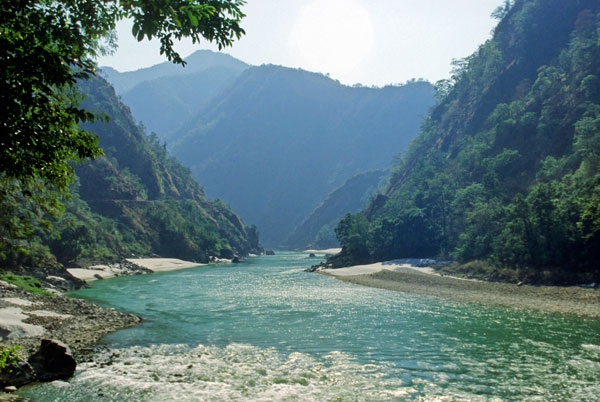
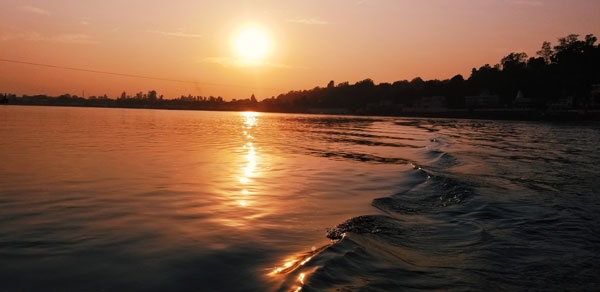
Book it: Abercrombie & Kent offers a seven-night trip to India, including four nights at Taj Rishikesh Resort & Spa and three at the Taj Palace, New Delhi, from £2,999 per person including international and domestic flights and transfers based on two people sharing.
Where to stay
Taj Rishikesh Resort & Spa: Inspired by a temple fort on the border of Kotkhai, TaJ Rishikesh Resort & Spa feels like a secret mountain hideaway. The chalet-style structure is decked out in local stone, slate and Canadian wood and cascades down a section of mountain formerly used for terrace farming, its 79 rooms and facilities spread out in camouflaged buildings across a garden oasis of eucalyptus and banyan trees, fountain grass and magnolia. There's a heated outdoor pool for mountainside swims, a Jiva Spa with treatments inspired by the river and countless cosy corners next to the fire. The best bit Wherever you are in this hotel, you can always hear the river.
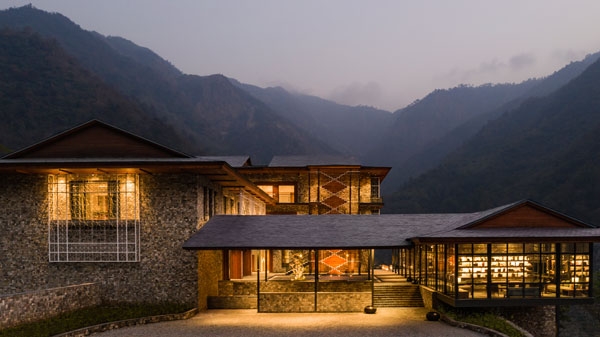

Taj Palace, New Delhi: The journey to Taj Rishikesh Resort & Spa is long, so advise clients to stop over at the Taj Palace, New Delhi. Opened in 1983, the hotel is an institution among India's elite. For a seriously luxurious stay, do like Will Smith and Mark Zuckerberg and book the Tata suite, the largest suite in India at 7,500sq ft featuring a gym, sauna and steam room, all-marble bathrooms with decadent water features and its own team of butlers. Or book clients a table at the flagship restaurant, where they can dine in a former Orient-Express carriage.
